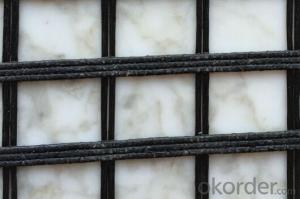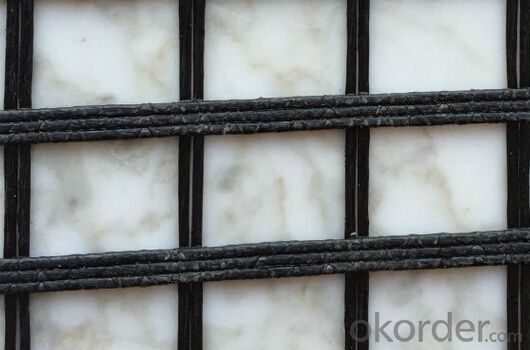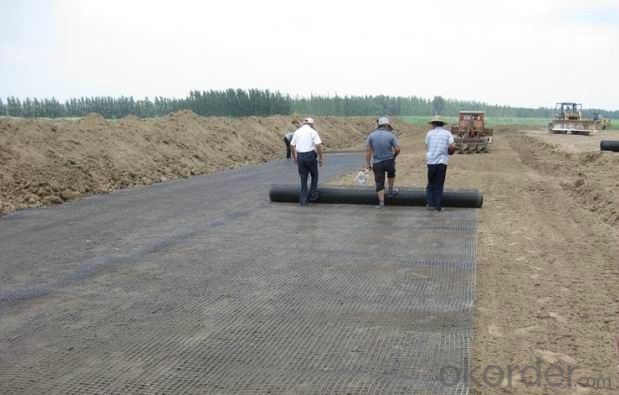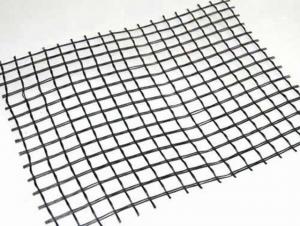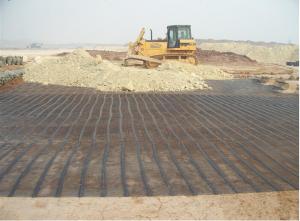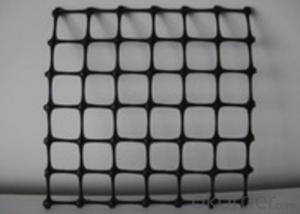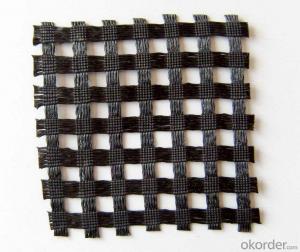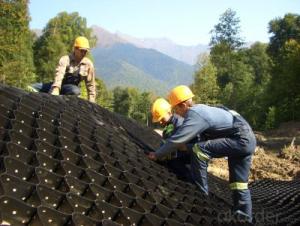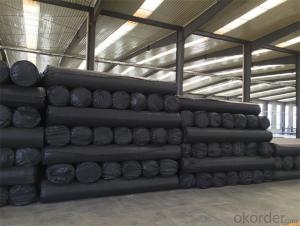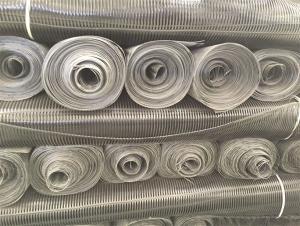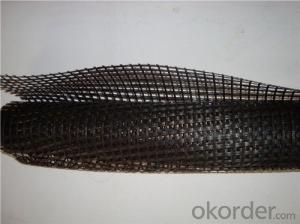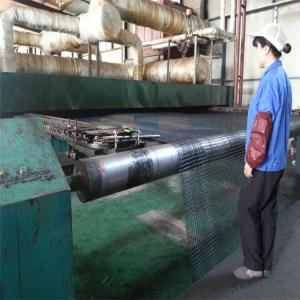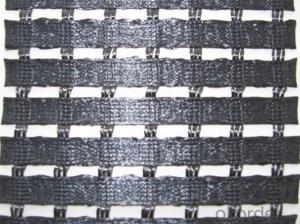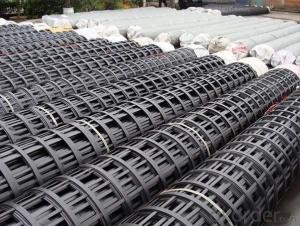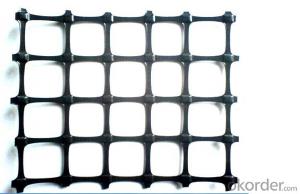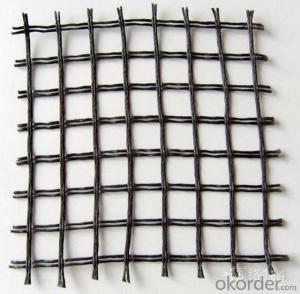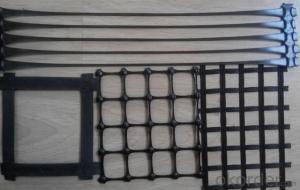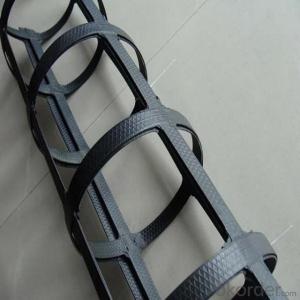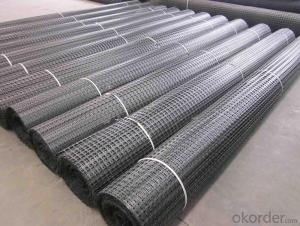Geogrids Manufacturer High Tensile Strength Polyester Geogrid with CE Certificate
- Loading Port:
- Tianjin
- Payment Terms:
- TT OR LC
- Min Order Qty:
- 1 roll
- Supply Capability:
- 19999999 roll/month
OKorder Service Pledge
OKorder Financial Service
You Might Also Like
Specification
Description of High Tensile Strength Polyester Geogrid
we have CE , ISO9001 certificate..Polyester Geogrid for Road Railway Highway Tunnel is Made from PET fiber by weaving technology after gummed processing
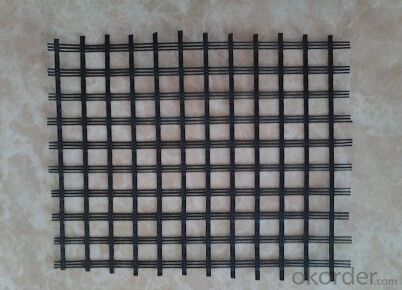
Specification of High Tensile Strenth Polyester Geogrid with CE Certifcate:
1.Strength: 20x20kn/m--600x600kn/m, such as :60/30, 60/60, 80/30, 120/30, 150/30, 200/30 etc.
2.Polyester Geogrid coated with PVC, Bitumen, SBR
3.Elongation:10% and 13%
4.Width: 1--6m
5.Packing:50m or100m/roll,
PE film outside, plstic tube inside.also can be made according clinet's need.
Application of High Tensile Strenth Polyester Geogrid with CE Certifcate:
(1)Roadbed reinforcement of road and railway, crack prevention, increase of roadbed strength;
(2)Reinforcement and stabilization of riverside, embankment and side slope;
(3)Dyke reinforcement on soft ground for stress evenness, sedimentation adjustment, increase of stability and loading capacity of fundus;
(4)Reinforcement of the surface of road and bridge
Property of Polyester Geogrid for Road Railway Highway Tunnel
I. High tensile strength
2. Low elongation
3. Anti-erosion, anti-aging
4. Good affinity with base material
5. Lig ht weig ht, water d rainage
FAQ
What is your advantages ?
I. Not easy to produce static after friction. In the coal mine, surface static resistance average is
Below lx109Q
2. Good flame retardant performance
3. Strong anti-corrosion and rust resistance
4. High bearing capacity, low elongation
- Q: Reinforced soil technology is embedded in the soil of geosynthetics, which in the soil into the steel line?
- This soil is a granular material, basically no tensile force, but there is a certain compressive capacity. If there is a certain tensile strength of the reinforcement material in the dispersion, there will be a completely different stress situation. This will greatly improve the tensile properties of the reinforced soil and improve its compressive properties. The theoretical research in this field is being carried out in depth. There are still many problems to be open.
- Q: What are the benefits of using geogrids in retaining walls?
- The benefits of using geogrids in retaining walls include increased stability, improved load-bearing capacity, reduced soil erosion, and longevity of the structure. Geogrids reinforce the soil, preventing it from sliding or collapsing under pressure, making the retaining wall more durable and resilient. Additionally, geogrids distribute the loads evenly, reducing the risk of settlement and enhancing the overall performance of the wall. They also enhance drainage and filtration, minimizing water buildup behind the wall and preventing soil erosion. Overall, geogrids help to ensure the longevity and effectiveness of retaining walls.
- Q: How do geogrids affect soil compaction?
- Geogrids help to improve soil compaction by providing reinforcement and stability to the soil. They distribute the load more evenly, reducing the risk of settlement and improving overall soil strength. Additionally, geogrids enhance the interlocking behavior of soil particles, increasing the soil's resistance to shear forces and minimizing lateral movement.
- Q: Can geogrids be used in reinforcement of embankments on collapsible soils?
- Yes, geogrids can be used in the reinforcement of embankments on collapsible soils. Geogrids provide additional stability and strength to the embankment, helping to prevent soil collapse and reduce potential settlement. By distributing loads more evenly, geogrids can effectively reinforce the embankment and improve its overall performance on collapsible soils.
- Q: What is the difference between geogrids and geotextiles?
- Geogrids are typically used for soil reinforcement and stabilization, providing structural support to prevent soil movement. On the other hand, geotextiles are used for filtration, drainage, and separation purposes, allowing water to pass through while preventing soil migration. Essentially, geogrids focus on reinforcement, while geotextiles focus on filtration and separation.
- Q: Can geogrids be used in reinforcement of mechanically stabilized earth retaining walls on soft soils?
- Yes, geogrids can be used in the reinforcement of mechanically stabilized earth retaining walls on soft soils. Geogrids are commonly employed in such applications to enhance the stability and load-bearing capacity of the retaining wall system. By providing tensile strength and distributing lateral loads, geogrids help to prevent the wall from sliding or failing due to the weak soil conditions.
- Q: Are geogrids effective in preventing soil erosion around pipelines?
- Yes, geogrids are effective in preventing soil erosion around pipelines. Geogrids are engineered materials that provide reinforcement and stabilization to the surrounding soil. They create a barrier that helps prevent soil movement and erosion caused by water flow or other environmental factors. Geogrids also distribute the weight and stress of the pipeline more evenly, reducing the chance of soil settlement and potential damage. Overall, geogrids play a crucial role in protecting pipelines from soil erosion and ensuring their long-term stability.
- Q: Which is better than geotextile and geogrid
- The strength of the geogrid is much larger than that of geotextile, but the effect of geotextile on the road to prevent reflection crack is obviously stronger than that of Geogrid
- Q: What are the different types of geogrids available?
- There are several different types of geogrids available, including uniaxial geogrids, biaxial geogrids, and triaxial geogrids. Uniaxial geogrids have strength in one primary direction and are often used for soil reinforcement and slope stabilization. Biaxial geogrids have strength in two directions and are commonly used for pavement stabilization and ground reinforcement. Triaxial geogrids have strength in three directions and are typically used for heavy-duty applications such as retaining walls and embankments.
- Q: Are geogrids suitable for use in reinforced embankments?
- Yes, geogrids are suitable for use in reinforced embankments. They are commonly used in civil engineering projects to provide stability, prevent soil erosion, and improve load-bearing capacity in embankment structures. Geogrids effectively distribute stress, enhance soil confinement, and reinforce the embankment to withstand heavy loads and prevent deformations.
Send your message to us
Geogrids Manufacturer High Tensile Strength Polyester Geogrid with CE Certificate
- Loading Port:
- Tianjin
- Payment Terms:
- TT OR LC
- Min Order Qty:
- 1 roll
- Supply Capability:
- 19999999 roll/month
OKorder Service Pledge
OKorder Financial Service
Similar products
Hot products
Hot Searches
Related keywords
